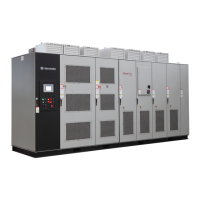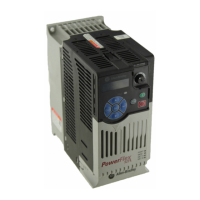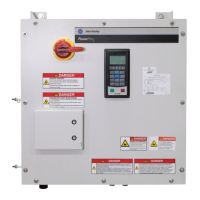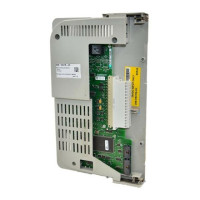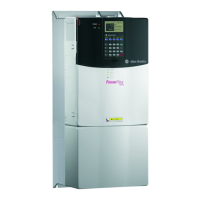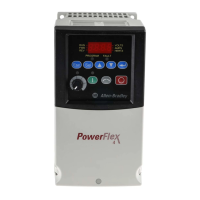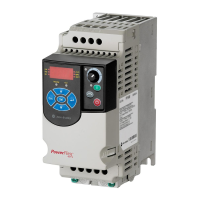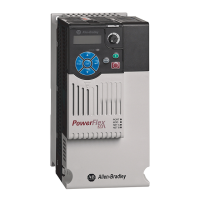2-74 Drive Overload
When the calculated junction temperature reaches a maximum limit the
drive will generate a fault. This fault can not be disabled. This maximum
junction temperature is stored in EE on the power board along with other
information to define the operation of the drive thermal overload function.
These values are not user adjustable. In addition to the maximum junction
temperature there are thresholds that select the point at which the PWM
frequency begins to fold back, and the point at which current limit begins to
fold back. As T
J
increases the thermal manager may reduce the PWM
frequency. If T
J
continues to rise current limit may be reduced, and if T
J
continues to rise the drive generates a fault. The calculation of the reduced
PWM frequency and current limit is implemented with an integral control.
PWM Frequency
PWM Frequency as selected by the user can be reduced by the thermal
manager. The resulting Active PWM Frequency may be displayed in a test
point parameter.
The active PWM frequency will change in steps of 2 kHz. It will always be
less than or equal to the value selected by the user, and will not be less than
the drives minimum PWM frequency. When drive temperature reaches the
level where PWM frequency would be limited, the kHz Alarm is turned on.
This alarm will be annunciated even if the reduced PWM frequency is not
enabled.
Current Limit
Current Limit as selected by the user can be reduced by the thermal
manager. The resulting active current limit may be displayed as a test point
parameter.
The active current limit will always be less than or equal to the value
selected by the user, and will not be less than flux current. When drive
temperature reaches the level where current limit would be clamped, the
ILmt Alarm is turned on. This alarm will be annunciated even if reduced
current limit is not enabled.
The active current limit is used during normal operation and during DC
injection braking. Any level of current requested for DC injection braking is
limited by the Active Current Limit.
Configuration
The [Drive OL Mode] allows the user to select the action(s) to perform with
increased current or drive temperature. When this parameter is “Disabled,”
the drive will not modify the PWM frequency or current limit. When set to
“Reduce PWM” the drive will only modify the PWM frequency. “Reduce
CLim” will only modify the current limit. Setting this parameter to
“Both-PWM 1st” the drive will modify the PWM frequency and the current
limit.
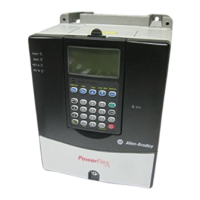
